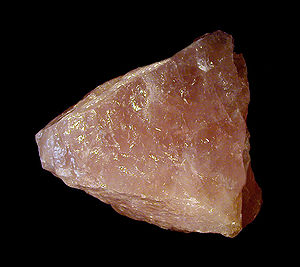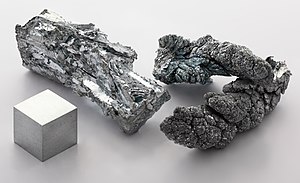- v50 information can now be added to pages in the main namespace. v0.47 information can still be found in the DF2014 namespace. See here for more details on the new versioning policy.
- Use this page to report any issues related to the migration.
Stone
v50.12 · v0.47.05 This article is about the current version of DF.Note that some content may still need to be updated. |
- (This article is about DF geology and the distribution of stones, and does not contain the specific locations of ores or gems. For that, as well a general introduction to the new player, see The Non-Dwarf's Guide to Rock)
- (For a list of stone sorted by tile see Tilesets#Stones)
An unmined rock or stone tile is a naturally occurring solid aggregate of minerals. Mining a rock tile leaves behind a loose stone (or just "stone") roughly 25% of the time. Other types of minable tiles include soil, sand, and clay; these tiles do not produce loose stones when mined.
Loose stones are divided into a few key categories:
- Ore: stones that produces metal bars when smelted
- Rough gems: rough gems can be cut, then used to encrust objects and create windows.
- Other stone: all other stones. Few of these have a use outside of items and structures. (Obsidian is one exception).
Economic stones are types of stone that can be reserved for a special purpose. For ores, this is smelting and for fluxes, this is steel production. Bituminous coal and lignite can be reserved for making coke.
Having created loose stone, many times you'll want to get rid of it or at least move it someplace else. See stone management for advice.
If you are having the opposite problem, and find yourself running out of stone, try making stone blocks.
Main layer types
There are four types of stone layers (plus soil, which is not stone). The type of layer is the primary indicator of what kind of ores you are likely to find on the map, as well as a sign of volcanic activity.
The types are sedimentary layers, igneous intrusive layers, igneous extrusive layers, and metamorphic layers.
The primary types of rock only occur in their own layers. (e.g. you won't find limestone in a marble layer.)
Stones forming entire layers
These types of stone occur as entire layers, containing some veins and pockets of other minerals (see below).
| Sedimentary | Igneous intrusive | Igneous extrusive | Metamorphic |
|---|---|---|---|
- ≈ - Magma-safe
Other Stone
Stones found on this table will occur as pockets and veins inside their respective stone layers (see above). When your miners newly encounter one of them you will receive an announcement, even for the ones that have no use other than to build constructions of unusual colors. Note that the veins or clusters can spread into other layers, and may cause some layers to contain stones they usually wouldn't. A few of these stones, such as Olivine, have other, more interesting minerals appear inside them.
Non-layer stone formations occur in one of three shapes: large clusters, veins, and small clusters. (See Veins & Clusters for full info.)
The following table does not contain ores and gems.
- (L) - occurs in large clusters
- (V) - occurs in veins
- (S) - occurs in small clusters
- (1) - occurs in individual tiles
By Color
For those concerned with aesthetics and wanting to know which stones are available in each color.
"Stone" in other Languages
|
DF Geology and Geology in Real Life
The geology and stones of Dwarf Fortress are based (to some extent) on real-world geology and mineralogy. To understand the terms used here, you may want to crack open a geology textbook (a high school one should suffice). If you don't happen to have one close by, the Wikipedia articles for geology, mineralogy, or the terms in question might help. Below is a very brief introduction tailored for DF gamers, with links to the relevant game-specific pages.
In geological terminology, a rock or stone is basically a composite of minerals. Minerals, the building blocks of rock, are hard inorganic materials with a definite chemical formula and a certain atomic structure. For example, the mineral quartz is composed of silicon dioxide (SiO₂) arranged in a pyramid structure. Quartz is a component mineral of rocks (stones) such as quartzite (almost entirely made of quartz) or granite (some 20~60% quartz, a bunch more of the mineral "feldspar", plus mica and some others). The distinction between minerals like mica (simple) and rocks like granite (composite) does not matter for Dwarf Fortress; just like in everyday language, they're all just "stones". Besides minerals, some rocks may include organic material; such rocks include bituminous coal (made of dead bog things) or limestone (made of the skeletons of ocean animals).
Rocks are classified by their creation processes, which also results in them settling down on stone layers, possibly in veins and clusters. DF models this too, so that it's quite relevant information for players; see the links for details.
An ore is a rock with a metal content high enough for it to be a viable source of that metal. Most metals do not occur by themselves in nature, but readily bind with minerals to form stones; e.g. zinc binds with sulfur minerals to form the rock sphalerite. To extract the metal from it, someone has to smelt the stone. A few metals may be found in pure form, like native gold and silver (but in DF, they still require smelting to be shaped into useable bars).
A gem is a mineral (or rock, or rock-like material) with intrinsic economic value for a culture, often because they're beautiful, durable, and/or rare. This depends not just on what's the mineral made of, but also on the internal layout of its atomic structure, which can dramatically alter its appearance and properties; see the article on gems for more.
 Rose quartz is made of the same basic quartz as quartzite (above), but its atoms are ordered into neatly arranged pyramid shapes, resulting in a shiny, transparent, faceted material. |
| Sedimentary | |||||
|---|---|---|---|---|---|
| Igneous |
| ||||
| Metamorphic | |||||
| Ore | |||||
| Economic | |||||
| Other |
Alunite · Anhydrite · Bauxite · Borax · Brimstone · Chromite · Cinnabar · Cobaltite · Cryolite · Graphite · Hornblende · Ilmenite · Jet · Kimberlite · Marcasite · Mica · Microcline · Olivine · Orpiment · Orthoclase · Periclase · Petrified wood · Pitchblende · Puddingstone · Pyrolusite · Realgar · Rutile · Saltpeter · Serpentine · Slade · Stibnite · Sylvite · Talc | ||||








